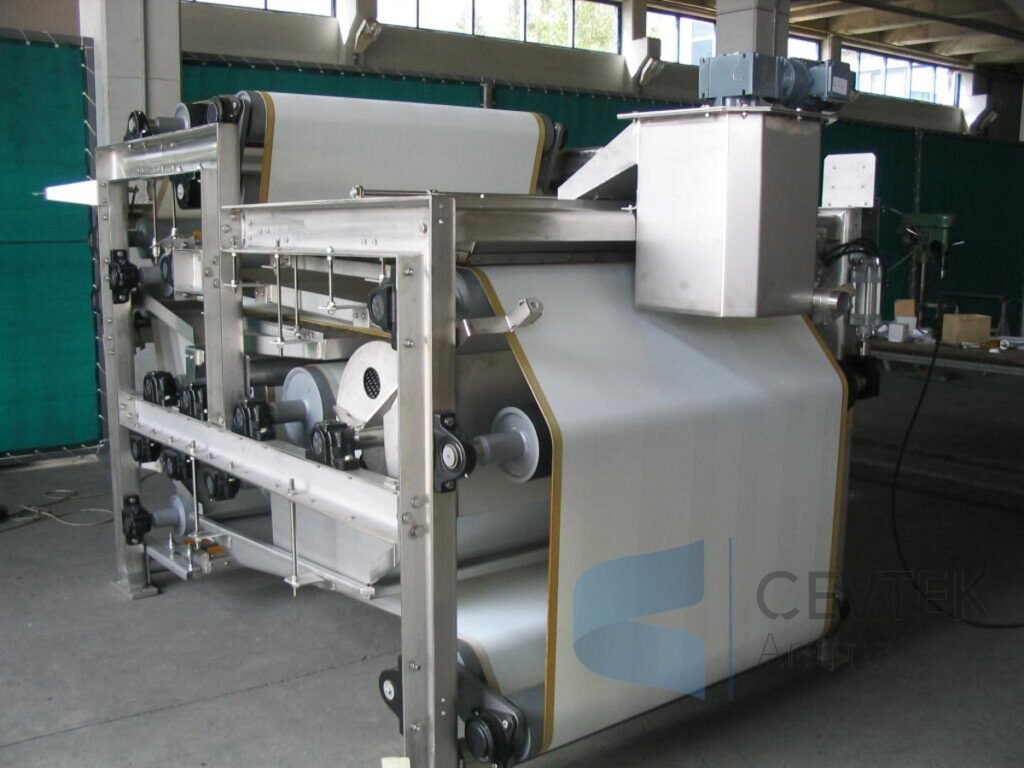Belt Filter Press
The process of pressing the water contained in the chemical or biological sludge formed in water and wastewater treatment plants into sludge cake after the lubrication process is carried out with Belt Filter Presses. They are the most preferred dewatering equipment due to their low operating and electricity consumption, continuous and uninterrupted operation principles and high dryness sludge cake efficiency.
Polielektrolit The sludge, which is conditioned by dosing polyelectrolyte, is taken into the system from the inlet structure and poured onto the cloth. The mud on the cloth moved by the drive drum is pressed between the perforated drums and then the compression drums and the cloth, respectively, to purify it from its water content. Perforated drums have larger diameters and enable long-term processing with slightly less pressure. In compression drums, much higher pressure is applied in less time, ensuring an effective pressing and dewatering process. The dewatered sludge is finally scraped by PE scraper blades and taken into the container or conveyor system.
The water separated from the sludge during the dewatering and pressing process is removed through stainless steel pans and collection pipes. Belt Filter Presses are continuously operating systems, and if the cloth slips on the drums during operation, it is corrected by the directional drums controlled by the pneumatic system. At the same time, in addition to the pneumatic system, the system automatically stops in case of any problem that may occur during operation, through the electronic switches on the Belt Filter Press. The system is washed with high pressure water and special nozzles to prevent any blockages that may occur on the cloth during the operation of the Belt Filter Press.
In order to realize an effective dewatering system, the design is made by evaluating many other components such as the type and width of the cloth used, drum diameters and quantities, applied pressure, type and concentration of polyelectrolyte used, type of sludge, and the amount of solid matter in the sludge.
Parts that make up the Belt Filter Press
- Main Chassis
- Cloth
- Drive Group
- Feed Drums
- Direction Drums (To adjust the cloth)
- Perforated Drums
- Compression Drums
- Water Collection Pan
- Pneumatic System
- Nozzles and Washing System
- Mud Scraping Blades Made of PE Material
- The connection apparatus.
- Accessories
Superiority of Belt Filter Press
- Low Initial Investment Cost
- Ease Of Installation
- Low operating Cost
- High Reduction in the Volume and Weight of the Pressed Sludge
- Continuous Dewatering Process
- Applicability in different capacities
- Quiet operation

